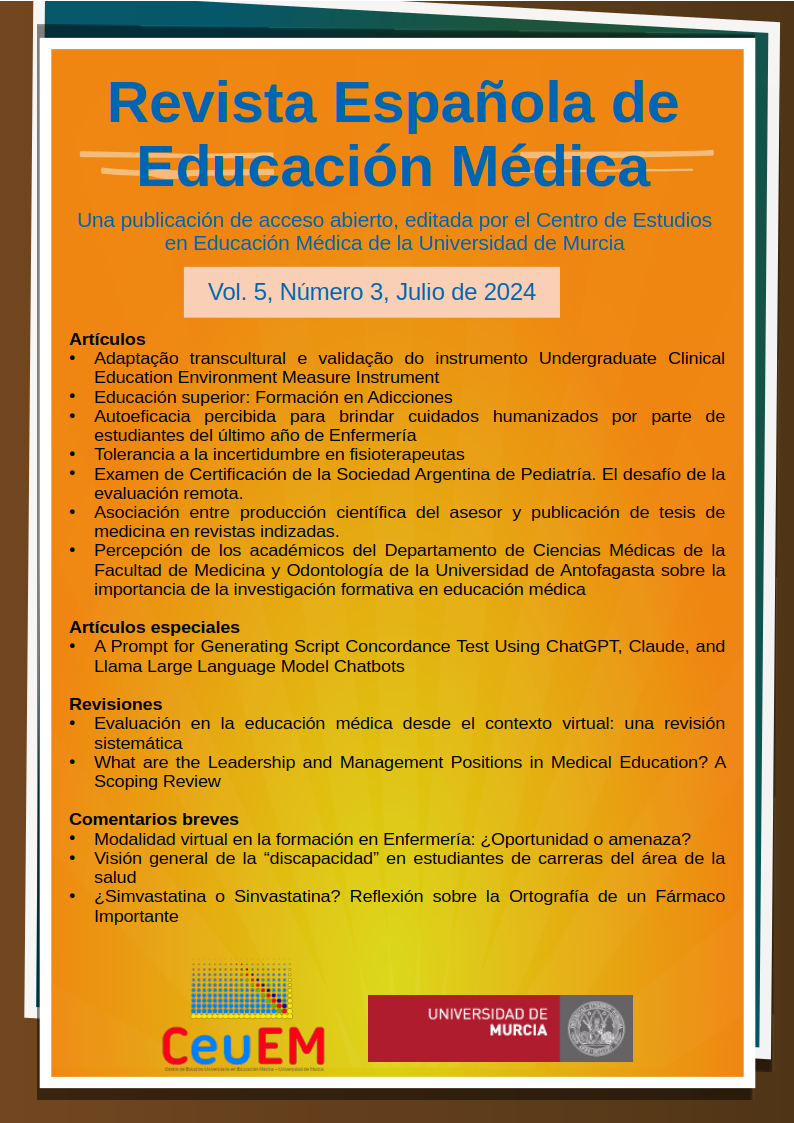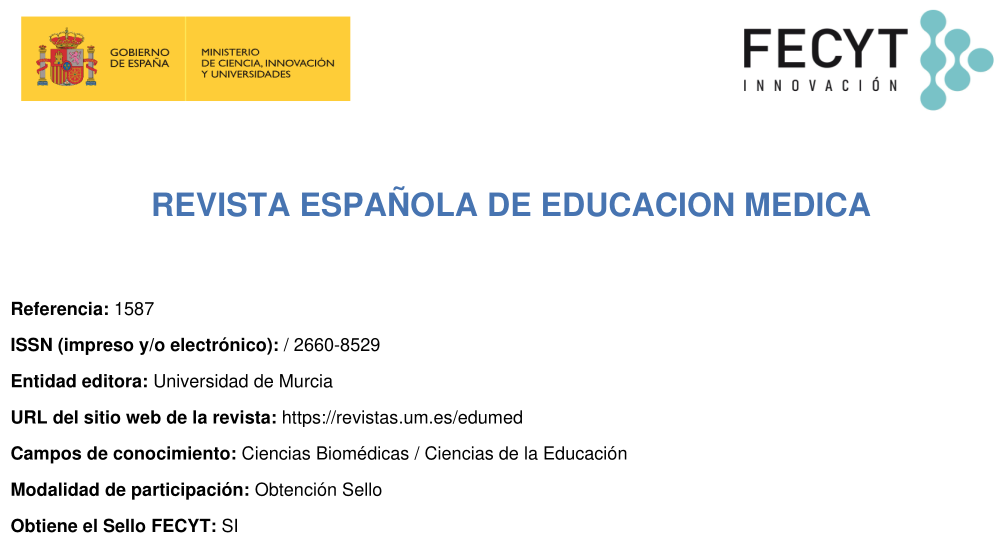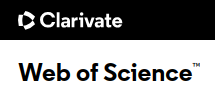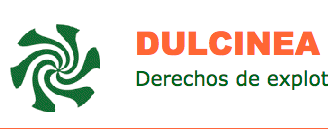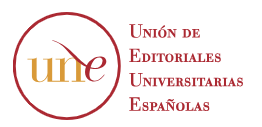Cross-cultural adaptation of the Undergraduate Clinical Education Environment Measure Instrument
Abstract
Introduction: The assessment of the learning environment is indispensable for the continuous improvement of teaching quality and, consequently, the achievement of learning objectives by students. Considering the lack of instruments in Portuguese from Portugal to assess the learning environment in a clinical setting, this study aimed to validate the Undergraduate Clinical Education Environment Measure instrument for Portuguese from Portugal through the cross-cultural adaptation of this instrument. Materials and Methods: The target population of the project consisted of medical students from the University of Beira Interior who underwent clinical internships in the academic year 2022/2023. A focus group was conducted to formulate an initial version adapted for Portuguese from Portugal, which was then reviewed by experts in the field. Subsequently, this version was applied in a pre-test, followed by individual interviews. The obtained results were discussed, the instrument was revised, and the distribution of responses was analyzed. Finally, the final version of the adapted instrument was applied to the target population, followed by statistical treatment and assessment of the psychometric properties of the instrument. Results: Confirmatory factor analysis demonstrates that the instrument adapted to the Portuguese context is valid and reliable, with an Omega coefficient of 0.96. Conclusion: Further consideration is required regarding the question "Do I have adequate access to computers" given the national landscape regarding medical students' access to clinical records. However, considering the stability of the psychometric properties of the instrument, it is ready to be used for evaluating learning environments in a clinical setting. The instrument adapted to the Portuguese context is valid and reliable, proving to be a useful tool for assessing the learning environment in a clinical setting for medical students.
Downloads
Metrics
-
Abstract536
-
pdf (version 2) (Português )318
-
pdf (version 2)318
References
Strand P, Sjöborg K, Stalmeijer R, Wichmann-Hansen G, Jakobsson U, Edgren G. Development and psychometric evaluation of the Undergraduate Clinical Education Environment Measure (UCEEM). Med Teach. 2013; 35(12):1014–26. https://doi.org/10.3109/0142159x.2013.835389
Hutchinson L. ABC of learning and teaching: Educational environment. https://doi.org/10.1136%2Fbmj.326.7393.810
Costa M da, Boller C, Zagonel IPS. Translation, cross-cultural adaptation to the Portuguese language and validation of the Undergraduate Clinical Education Environment Measure Instrument (Uceem). Rev Bras Educ Med. 2022;46(1). https://www.scielo.br/j/rbem/a/6d4HYrpLTvxFmwkVWkjnfbx/
Troncon LE de A. Ambiente educacional. Medicina (Ribeirão Preto). 2014;47(3):264-71. https://doi.org/10.11606/issn.2176-7262.v47i3p264-271
Nordquist J, Hall J, Caverzagie K, Snell L, Chan MK, Thoma B, et al. The clinical learning environment. Med Teach. 2019;41(4):366–72. https://doi.org/10.1080/0142159x.2019.1566601
Genn JM. AMEE Medical Education Guide No. 23 (Part 1): Curriculum, environment, climate, quality and change in medical education–a unifying perspective. Med Teach. 2001 3;23(4):337–44. https://doi.org/10.1080/01421590120075661
Skochelak SE, Stansfield RB, Dunham L, Dekhtyar M, Gruppen LD, Christianson C, et al. Medical student perceptions of the learning environment at the end of the first year: A 28-medical school collaborative. Academic Medicine. 2016; 91(9):1257–62. https://doi.org/10.1097/acm.0000000000001137
Rusticus S, Worthington A, Wilson D, Joughin K. The Medical School Learning Environment Survey: an examination of its factor structure and relationship to student performance and satisfaction. Learn Environ Res. 2014; 17(3):423–35. https://link.springer.com/article/10.1007/s10984-014-9167-9
Domingues Hirsch C et al. Fatores preditores e associados à satisfação dos estudantes de enfermagem Predictive and associated factors with nursing students’ satisfaction. Acta Paul Enferm. 2015; 28(6):566–72. https://doi.org/10.1590/1982-0194201500093
Schönrock-Adema J, Bouwkamp-Timmer T, van Hell EA, Cohen-Schotanus J. Key elements in assessing the educational environment: Where is the theory? Advances in Health Sciences Education. 2012; 17(5):727–42. https://doi.org/10.1007/s10459-011-9346-8
Dornan T, Boshuizen H, King N, Scherpbier A. Experience-based learning: A model linking the processes and outcomes of medical students’ workplace learning. Med Educ. 2007; 41(1):84–91. https://doi.org/10.1111/j.1365-2929.2006.02652.x
Weiss KB, Bagian JP, Nasca TJ. The Clinical Learning Environment. The Foundation of Graduate Medical Education. Vol. 309, JAMA. 2013. http://doi.org/10.1001/jama.2013.1931
Kilty C, Wiese A, Bergin C, Flood P, Fu N, Horgan M, et al. A national stakeholder consensus study of challenges and priorities for clinical learning environments in postgraduate medical education. BMC Med Educ. 2017; 17(1). https://doi.org/10.1186/s12909-017-1065-2
Spencer J. Learning and teaching in the clinical environment. BMJ 2003; 326:591. https://doi.org/10.1136/bmj.326.7389.591
Wu D, Guo M, Xu C. The Development of Continuing Medical Education in China. Creat Educ. 2021; 12(01):203–11. https://doi.org/10.4236/ce.2021.121015
Messas JT, Leonello VM, Fernandes MDFP, Gonçalves GCDC, Bucchi SM, Mira VL. The educational environment of the undergraduate nursing course from the student perspective. Revista da Escola de Enfermagem. 2015; 49(SpecialIssue 2):104–12. https://doi.org/10.1590/s0080-623420150000800015
Ahmady S, Khani H. The situational analysis of teaching-learning in clinical education in Iran: a postmodern grounded theory study. BMC Med Educ . 2022; 22(1):520. https://doi.org/10.1186/s12909-022-03577-3
Sellberg M, Palmgren PJ, Möller R. A cross-sectional study of clinical learning environments across four undergraduate programs using the undergraduate clinical education environment measure. BMC Med Educ. 2021;21(1). https://doi.org/10.1186/s12909-021-02687-8
Edelbring S, Dastmalchi M, Hult H, Lundberg IE, Dahlgren LO. Experiencing virtual patients in clinical learning: a phenomenological study. Advances in Health Sciences Education. 2011 Aug 9;16(3):331–45. https://doi.org/10.1007/s10459-010-9265-0
Continuing Professional Development Of Medical Doctors Wfme Global Standards For Quality Improvement. https://formacionenradiologia.wordpress.com/wp-content/uploads/2018/09/wfme-2015-continuing-professional-development.pdf
Vieira JE, Machado JLM, Ribeiro SMA. Assessment of the Environment with DREEM at a Medical School Using Active Methodologies and an Integrated Curriculum. Creat Educ. 2015;06(17):1920–35. http://dx.doi.org/10.4236/ce.2015.617198
Fazendeiro M. Perceções dos Estudantes de Medicina acerca do Ambiente Educativo da Faculdade de Ciências da Saúde. [Covilhã]: Universidade da Beira Interior; 2011. https://ubibliorum.ubi.pt/handle/10400.6/923?locale=pt_PT
Lund University Library. UCEEM . [cited 2023 Apr 26]. Available from: https://libguides.lub.lu.se/c.php?g=661963&p=4677633
Epstein J, Santo RM, Guillemin F. A review of guidelines for cross-cultural adaptation of questionnaires could not bring out a consensus. J Clin Epidemiol. 2015;68(4):435-441. doi:10.1016/j.jclinepi.2014.11.021
Gjersing L, Caplehorn JR, Clausen T. Cross-cultural adaptation of research instruments: language, setting, time and statistical considerations. BMC Med Res Methodol. 2010;10:13. doi:10.1186/1471-2288-10-13
Beaton DE, Bombardier C, Guillemin F, Ferraz MB. Guidelines for the process of cross-cultural adaptation of self-report measures. Spine (Phila Pa 1976). 2000;25(24):3186-3191. doi:10.1097/00007632-200012150-00014
Beauducel, A., & Herzberg, P. Y. (2006). On the Performance of Maximum Likelihood Versus Means and Variance Adjusted Weighted Least Squares Estimation in CFA. Structural Equation Modeling, 13(2), 186–203. https://doi.org/10.1207/s15328007sem1302
Halcomb E, Gholizadeh L, Digiacomo M, Phillips J, Davidson P. Literature review: Considerations in undertaking focus group research with culturally and linguistically diverse groups. J Clin Nurs. 2007; 16:1000–11. https://doi.org/10.1111/j.1365-2702.2006.01760.x
Hair JF, Black WC, Babin BJ, Anderson RE. Multivariate Data Analysis. 8th ed. Hampshire, United Kingdom: CENGAGE; 2019.
Bonniga, Ravinder and Saraswathi, Dr. A.B., Literature Review Of Cronbachalphacoefficient And Mcdonald's Omega Coefficient ( 2020). European Journal of Molecular & Clinical Medicine, Volume 07, Issue 06, 2020, Available at SSRN: https://ssrn.com/abstract=4443362
Dornan T, Boshuizen H, King N, Scherpbier A. Experience-based learning: A model linking the processes and outcomes of medical student workplace learning. Med Educ. 2007; 41:84–91. https://doi.org/10.1111/j.1365-2929.2006.02652.x
Schönwetter DJ, Lavigne S, Mazurat R, Nazarko O. Students’ Perceptions of Effective Classroom and Clinical Teaching in Dental and Dental Hygiene Education. J Dent Educ. 2006; 70(6):624–35. https://onlinelibrary.wiley.com/doi/abs/10.1002/j.0022-0337.2006.70.6.tb04118.x
Findyartini A, Utami D. Development of Clinical Learning Environment Measure in the Undergraduate Medical Program. Adv Sci Lett. 2018; 24:6097–108. https://doi.org/10.1166/asl.2018.12637
Copyright (c) 2024 Servicio de Publicaciones de la Universidad de Murcia

This work is licensed under a Creative Commons Attribution-NonCommercial-NoDerivatives 4.0 International License.
The works published in this magazine are subject to the following terms:
1. The Publications Service of the University of Murcia (the publisher) preserves the economic rights (copyright) of the published works and favors and allows them to be reused under the use license indicated in point 2.
2. The works are published under a Creative Commons Attribution-NonCommercial-NoDerivative 4.0 license.
3. Self-archiving conditions. Authors are allowed and encouraged to disseminate electronically the pre-print versions (version before being evaluated and sent to the journal) and / or post-print (version evaluated and accepted for publication) of their works before publication , since it favors its circulation and earlier diffusion and with it a possible increase in its citation and reach among the academic community.

